One is called the “child of the storm.” Another is “the crown jewel.” The third was dubbed “the voice of justice.”
They are the three great laws of the civil rights movement: the 1964 Civil Rights Act, the 1965 Voting Rights Act and the Fair Housing Act of 1968.
A new conservative bloc on the Supreme Court though may soon treat them as something else: outdated “racial entitlements” that need to be put back in their place.
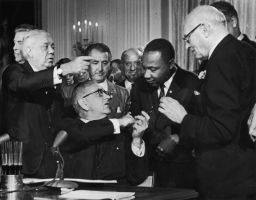
That’s the dreaded future some experts envision for these landmark laws now that Justice Brett Kavanaugh has joined the Supreme Court. They warn that, for the first time, the high court has five firmly conservative judges who were groomed to dismantle the legal legacy of these laws, which have stood for 50 years.
“They will chip, chip away at these laws until there is nothing left,” says Carol Anderson, author of “One Person, No Vote: How Voter Suppression Is Destroying Our Democracy.”
“I could see the court tilting further and further to the right until we end up with a dystopian society.”
Such steady erosion would halt what some call the “Second American Civil Rights Revolution.” It would also destroy a central plank in the legacy of the Rev. Martin Luther King Jr. When the nation celebrates the King holiday on Monday, much of the focus will be on his stirring speeches and dramatic marches.
But these three laws are as central to King’s legacy as his “I Have a Dream” speech. They are in some ways the legal foundation for the “Beloved Community” he evoked in his speeches and books. While he wasn’t the only person who fought and died for these laws – there were countless others who did the same – King’s role in their passage was indispensable.
Today these laws touch virtually every American. They have changed everything from how women are treated in the workplace to protecting people with disabilities. Yet few realize these laws came about only because of a brutal struggle. And even fewer may be aware how a new high court could unravel them – all while claiming to honor the civil rights leader.
Here’s how some legal scholars and historians say it could happen.
The Fair Housing Act: Changing the way we define discrimination
It was one of the most frightening moments in his ministry, and it was all caught on film.
It was in August 1966 and King had launched a campaign to integrate housing in Chicago. He was about to lead a march on a sunny summer day when a white mob confronted him in a park. Someone threw a rock, and it hit King in the head. He fell to a knee, a look of fear visible on his face.
“I have never seen, even in Mississippi and Alabama, mobs as hateful as I’ve seen here in Chicago,” King told reporters afterward.
King’s Chicago campaign would ultimately languish. But his assassination two years later would spark the passage of the 1968 Fair Housing Act. The legislation had been stalled, but President Lyndon Johnson successfully urged Congress to pass it, saying it would honor King’s legacy. When he signed it into law, Johnson declared, “The voice of justice speaks again.”
The fair housing law is one of the most consequential ones in America. It literally hits people where they live. It outlaws discrimination in the renting, buying and financing of homes based on race, religion, national origin and gender. It also protects families with children and people with disabilities seeking housing.
“It goes way beyond race, and it has from the very start,” says Gregory D. Squires, editor of “The Fight for Fair Housing: Causes, Consequences and Future Implications of the 1968 Fair Housing Act.”
The act is less well known than the other two landmark laws. But it’s become a battleground for one of the most powerful tools used to fight discrimination of any kind. That tool is called the “disparate impact standard,” and many legal scholars expect the court’s conservative bloc to abolish it.
The standard looks not at the racial intent but the racial impact of a policy. The government doesn’t have to catch a landlord or mortgage lender being intentionally racist to conclude they’re discriminating. It looks at statistical evidence, which often reveals racial disparities.
“A policy that concentrates low income housing vouchers in poor, minority neighborhoods, for example, is every bit as discriminatory as a whites-only listing – per a disparate impact reading of the Fair Housing Act,” Kriston Capps explained in an article for CityLab magazine called “Is the Fight for Fair Housing Over?”

Critics of disparate impact, though, say it’s a contrived legal theory that encourages frivolous lawsuits and the use of racial quotas. They say the Fair Housing Act was only meant to target intentional discrimination.
The Obama administration relied on disparate impact to secure a $335 million settlement in 2011 against Bank of America. The government concluded the bank’s now-defunct Countrywide Financial unit had charged black and Latino customers higher rates and fees than white applicants with similar credit histories.
The standard is crucial, civil rights advocates say, because it’s used not only in housing law, but other areas such as in education and employment regulations. Plus, the most insidious forms of racism are no longer overt, they say: Few people are going to be dumb enough to write a memo saying don’t rent to Mexicans or Muslims. The standard gives advocates a radar for detecting discrimination even when it’s hidden or unintentional.
Disparate impact, though, has been hanging by a legal thread at the Supreme Court.
Justice Anthony Kennedy was the only conservative who voted to preserve the standard during a crucial housing case in 2015. He said the courts shouldn’t just pay attention to intentional racism. In his decision upholding the standard, he alluded to the damage done by “unconscious prejudices and disguised animus.”
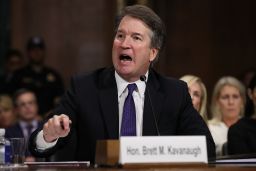
Kennedy has retired – while the four conservative justices who dissented in that case are still on the court.
They’re now joined by Kennedy’s replacement, Kavanaugh, who has a history of being skeptical of disparate impact theory, according to several groups that examined his record.
The high court may now be poised to render the Fair Housing Act toothless – and, some say, dramatically narrow the definition of discrimination.
“You’d have to prove that a real estate agent said, ‘I’m not going to sell you a house because you’re black,’ and they’re not going to do that,” says Peter Irons, author of “A People’s History of the Supreme Court,” which looks at how the high court has acted to thwart social change.
It could mark a return to a segregated America, when banks and real estate agents used various means to prevent the “wrong kind of people” from moving into white neighborhoods, Squires says.
“We would probably see less movement in the direction of more diverse communities, and increasing incidents of discrimination,” says Squires, who is also a sociology professor at the George Washington University.
“Housing providers would feel empowered to do things they wouldn’t do today with disparate impact.”
The Trump administration appears to be feeling empowered enough to question the standard. The Washington Post recently reported that officials are considering rolling back the use of disparate impact in ways that would dilute federal rules against discrimination of women and people of color in areas such as housing and education.
Such a move would take the United States back to a pre-civil rights era, writes Nancy LeTourneau in a Washington Monthly column about the proposed rule change.
“We’ll be headed back to the 1950s when it comes to civil rights,” she says, “with racists given free rein to discriminate as long as they don’t make racially biased statements about it in public.”
The 1965 Voting Rights Act: Taking it off ‘life support’
Here’s a thought that frightens some people who worry about the spread of voting restrictions across America:
Chief Justice John Roberts Jr. is now considered the swing vote on the Supreme Court.
Civil rights advocates have long regarded Roberts as an implacable foe of the 1965 Voting Rights Act, which targets racially discriminatory voting restrictions. He was a “key foot solider” in the Reagan administration’s attempts to weaken the law as a litigator in the Justice Department. One Justice Department lawyer told Mother Jones that Roberts “had it in for the Voting Rights Act” as far back as the 1980s, noting that he thought it should only address intentional discrimination.
He still does, says Anderson, author of “One Person, No Vote.”
“I don’t think John Roberts believes in the Voting Rights Act,” she says. “Because John Roberts has this veneer of respectability, folks find it very difficult to place uber-right ideologies in that veneer. If you’re looking at the man’s record, you can’t be hopeful.”
In 2013, Roberts wrote the ruling that struck down a key section of the Voting Rights Act in Shelby County v. Holder. Section 5 had stipulated that states with a history of racially discriminatory voting first had to “pre-clear” any voting change with the federal government.
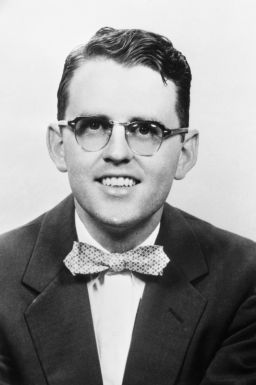
That section of the law was transformative. Before the Voting Rights Act, the South was virtually an apartheid state. Black people who tried to register to vote were sometimes beaten or murdered. Voter registration offices were closed or rarely opened in black areas, and blacks voters faced “literacy tests” that were nearly impossible to pass.
King called the right to vote the “No. 1 civil rights issue.”
“So long as I do not firmly and irrevocably possess the right to vote, I do not possess myself,” King said in a 1957 speech at the Lincoln Memorial, “Give Us the Ballot – We Will Transform the South.”
“I cannot make up my mind – it is made up for me. I cannot live as a democratic citizen, observing the laws I have helped to enact – I can only submit to the edict of others.”
His leadership was vital in forcing Congress to pass the Voting Rights Act. He helped organize and lead a campaign in Selma, Alabama, that was designed specifically to produce a voting rights bill.
The law is known today as “the crown jewel” of the movement. The dramatic expansion of black political power within the last 30 years was made possible by the act. No Voting Rights Act, no President Barack Obama.
In the Shelby decision, Roberts said the court was not overturning the law’s permanent ban on racial discrimination in voting. It was merely jettisoning a formula that unfairly targeted states with a history of racially discriminatory voting practices. He praised the Voting Rights Act, saying, “There is no denying that, due to the Voting Rights Act, our nation has made great strides.”
Roberts’ rhetoric offered a sneak preview of how the court will go after other civil rights laws, some say: Gut them while celebrating their importance. CNN senior legal analyst Jeffrey Toobin described Roberts’ reasoning this way: “Declare victory in the nation’s fight against racial discrimination and then to disable the weapons with which that struggle was won.”
Voting rights advocates still hold out some hope for what remains of the Voting Rights Act, but the results so far have been mixed.
Section 2 of the act bans racially discriminatory voting practices once they go into effect. It also bans any local voting changes that have “the result” of denying racial minorities participation in the political process. But some say relying only on Section 2 hurls voting rights back to the way they were before the law ever existed. Then, as now, voters had to spend a lot of time and money on lawsuits that target racially discriminatory voting changes after they went into effect.
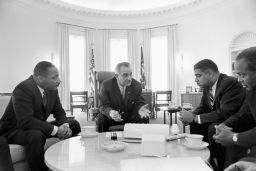
Voting rights activists recently tried to use Section 2 to go after the Texas Legislature.
They argued before the high court that state lawmakers violated Section 2 when they drew congressional and legislative maps that diluted minority voters. The conservative bloc on the high court, though, voted 5-4 last year in Abbott v. Perez to uphold all but one of Texas’ congressional and state legislative districts. One voting rights expert said that decision gives “states like Texas freer rein for repression of minority voting rights.”
The high court’s decision rejected a lower court finding that lawmakers had violated the Voting Rights Act by drawing maps that discriminated against black and Latino voters. Justice Samuel Alito wrote for the majority in the Abbott decision that courts must presume the “good faith” of state lawmakers when gauging whether their voting changes were driven by racism.
That same month, the court’s conservative bloc also approved Ohio’s purging of its voting rolls, a move that some critics say changes voting rights to a “use it or lose it” proposition.
Anderson says the high court’s conservative bloc isn’t finished with the Voting Rights Act.
“They will go after Section 2 and just say there’s no need for the Voting Rights Act; people can vote if they want to,” says Anderson, who is also a professor of African-American studies at Emory University in Atlanta.
The conservative bloc on the high court will then treat voting ID laws, which discourage millions of Americans from voting, as an issue of character, not discrimination, Anderson says. She doesn’t expect Kavanaugh to change the court’s trajectory on voting rights. He was part of a panel of three federal judges that upheld a South Carolina voter ID law in 2012.
The character argument is already being invoked. In 2016, an Alabama election official said he opposes automatically registering voters when they turn 18 because allowing “lazy people” to register without any effort would “cheapen” the civil rights movement’s voting rights legacy.
“They’re going to treat the issue of voter turnout, the issue of voter registration, as a singular moral issue, a personal failing,” Anderson says, “not a structural one that the state has put into place.”
One legal commentator says voting rights are on “life support,” and that the United States is in the midst of “the worst decade for voter suppression since the 1940s.” Anderson evokes another era when she thinks of life after the movement’s “crown jewel” has been tarnished.
It would look in some ways like America before the Civil War – half-slave, half-free – half of the country making voting more accessible while the other half throws up restrictions.
“We’re going to have the kind of political battles that become so frayed,” Anderson says, “that it will feel like a Disunited States.”
The 1964 Civil Rights Act: Goodbye affirmative action?
It was called “the child of a storm,” the product of one of the most turbulent periods in American history during peacetime.
At the center of that storm was the assassination of President John F. Kennedy.
The 1964 Civil Rights Act was birthed not just in idealism, but also blood. Kennedy first introduced a civil rights bill in 1963. Lyndon Johnson, however, could only summon the congressional will to pass the law by invoking Kennedy’s death after a ferocious yearlong legislative battle.
What pushed Kennedy to introduce the bill was relentless pressure from King and other civil rights protesters. King led a bloody civil rights campaign in Birmingham, Alabama, in 1963 that provoked outrage across the globe. He also wrote his classic “Letter From Birmingham Jail” during the protests.
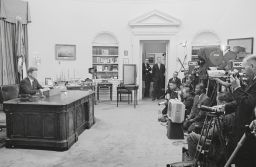
Kennedy went on national television to call for a civil rights bill in June 1963. He echoed King’s letter so much that “in a powerful sense, King and the movement were the authors of the president’s oratory,” historian Jonathan Rieder wrote.
King was ecstatic after hearing Kennedy’s speech.
“Can you believe that white man not only stepped up to the plate, he hit it over the fence!” he said.
The law spelled the end of “For Whites Only” signs in public places. But it didn’t just help racial minorities. It explicitly banned discrimination against women and religious minorities as well. It inspired millions of women to enter the workplace. And it served as a model for other anti-discrimination measures such as the Americans With Disabilities Act and the Pregnancy Discrimination Act.
It also spawned one of the most controversial legacies of the civil rights movement: the use of affirmative action, particularly in higher education.
Mention affirmative action, and some people’s blood pressure immediately spikes. There’s a popular argument among conservatives that King opposed affirmative action. It’s not true. Although King did not use the phrase “affirmative action” – it was coined by Kennedy – he supported the concept.
“A society that has done something special against the Negro for hundreds of years must now do something special for the Negro,” King wrote in his final book, “Where Do We Go From Here: Chaos or Community?”
There’s also a popular belief that affirmative action is used today to set racial quotas and compensate for slavery and segregation.
But the high court has long banned those uses of affirmative action. In its 1978 decision in Regents of the University of California v. Bakke, the Supreme Court ruled that colleges could consider the race of applicants only for the purposes of building diversity in a student body.
Affirmative action in higher education survived a near-death experience in 2016 when Justice Anthony Kennedy cast a surprising and pivotal vote upholding the University of Texas’ race-based admissions plan.
But the rationale used to justify the Bakke and Texas decisions is also hanging by a thread.
The court’s conservative bloc may soon ban colleges from considering the race of applicants under any circumstances, even to promote diversity, some say.
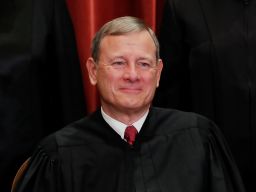
What inspires such pessimism? All five conservatives on the bench come out of a conservative legal movement that was formed in part to strike down anti-discrimination laws. That movement says dividing people up by race is unconstitutional, that the Constitution is “colorblind” and that all Americans should be treated as individuals, not as members of a racial or ethnic group.
Roberts, the chief justice, alluded to this legal point of view when he once wrote in a voting rights case, “It is a sordid business, this divvying us up by race.”
The high court has been led by conservatives before, but nothing like this new bloc, says Garrett Epps, a constitutional law professor at the University of Baltimore School of Law.
“It really is a group of people who self-identify as movement conservatives, and their mission is to take the courts back and fundamentally change their function in our political system,” Epps says.
Roberts already has written an opinion striking down some school district plans designed to promote diversity.
In 2007, Roberts drew a moral equivalence between two districts’ plans to keep schools from becoming racially segregated and Jim Crow-era schools that banned black children from attending.
Roberts cited the 1954 landmark Brown v. Board of Education decision, which outlawed the “separate but equal” doctrine that led to segregated schools, in the 5-4 opinion that struck down the plans in Seattle and Louisville, Kentucky.
“Before Brown, schoolchildren were told where they could and could not go to school based on the color of their skin. The school districts in these cases have not carried the heavy burden of demonstrating that we should allow this once again – even for very different reasons,” Roberts wrote.
Kavanaugh is equally opposed to affirmative action, some civil rights advocates say.
The NAACP described him as a “hard-core ideologue” who is “hostile” to affirmative action. The group pointed to his work helping the Bush administration’s unsuccessful 2003 challenge to a University of Michigan admission program that considered race. The NAACP noted Kavanaugh once wrote that “the Constitution does not allow governmental racial classifications.”
If affirmative action in higher education is struck down, some people say they already know what to expect. They cite California.
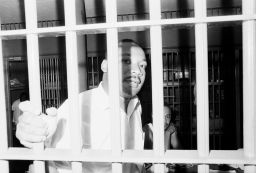
In 1996, nearly two decades after the Bakke decision, California voters passed Proposition 209, which banned the use of affirmative action in educational settings. Following the ban, admission offers to blacks at UCLA and the University of California, Berkeley, fell by 55%, according to one estimate. One UCLA faculty member told The New Yorker that his school ended up “looking more like Ole Miss.”
“We had a massive plummeting of Latino and African-American students in law schools and in medical schools,” says Anderson, author of “One Person, No Vote.” The ban still stands.
Epps, a contributor to The Atlantic Monthly, says he expects the new conservative majority to strike down affirmative action while borrowing from the rhetorical playbook Roberts flashed in the Voting Rights Act decision.
These justices won’t admit that they’re overturning a landmark law. They’ll say they’re actually fulfilling the original goal of the civil rights laws by creating a colorblind society, he says.
“Of course, they’re never going to say we decided to change national policy,” Epps says.
“It’s going to be a lot of language like the Seattle case. There’s going to be a lot of pious language about ‘We yield to no one in our contempt for racism.’ ” But Epps says they’ll really be thinking, ” ‘And that’s precisely why white people have to win.’ ”
The ripple effect of such decisions could sweep aside much of the civil rights movement’s legal legacy, says Epps, who is also author of “American Justice 2014: Nine Clashing Visions on the Supreme Court.”
The United States may be on the verge of entering a post-civil rights landscape, he says.
Epps cited an article in The New Republic more four years ago about the end of the civil rights movement.
“We may be at that place now,” he says.
Power to the people or the court?
There is, however, one optimistic scenario for some who dread the rise of a new conservative court. The power of the people will eventually beat the power of the court, says University of Chicago law professor Gerald Rosenberg.
Rosenberg is the author of “The Hollow Hope: Can Courts Bring About Social Change?” He doesn’t buy into the doomsday scenarios.
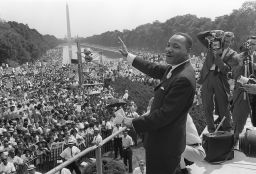
“If you think about the major social changes in the 20th century – Social Security, the minimum wage, nondiscrimination laws, Medicare and Medicaid – they are all acts of Congress, not the courts.”
He says a new high court can’t reverse the most significant changes embedded in civil rights laws as long as most Americans support them.
“Social change almost always comes through the political process,” he says, “not the courts.”
Some might argue with Rosenberg by pointing to one of the most infamous periods in Supreme Court history. In the late 19th century, the high court obliterated post-Civil War racial progress with a series of blatantly racist decisions that culminated in 1896 with Plessy v. Ferguson. That notorious ruling upheld racial segregation laws, sanctioning the separate but equal doctrine that undergirded Jim Crow for nearly a century.
Rosenberg though points to Plessy and that Supreme Court era to make the opposite point – that the high court isn’t as all-powerful as people think.
What if the high court had ruled against the separate but equal doctrine, he asks, and banned segregation laws throughout America?
Most white Americans would have ignored the decision, he says, because white supremacy was too ingrained.
“You think that would have mattered one whit in practice?” he says. “The court absolutely eviscerated civil rights laws in the late 19th century in part because white Americans had no interest in them.”
Power, he says, ultimately belongs to the people.
“I think we’re in for some really tough times,” he says. “In the short turn there’s going to be some bad stuff. But in the long run it’s up to voters.”
Epps shares some of that optimism. He says the United States will eventually have to embrace “its demographic destiny” because of the browning of America. But it can’t thrive if it restricts the rights of racial minorities whose talents it will need to prosper.
But it’s what happens in the short term that worries him.
“We could have a serious transition problem,” Epps says. “We could have a white-run minority political system resisting successfully, for quite a long time, the transition to a multiracial system. There could be a lot of suffering, a lot of lost opportunities for our society and for young people of all races.”
If that dystopian period becomes permanent, though, all bets are off. The three great laws of the civil rights movement would no longer inspire poetic tributes celebrating the nation’s march toward King’s Beloved Community.
Instead they’d become discredited legal relics from an era of optimism that would seem even further away than it does today.






